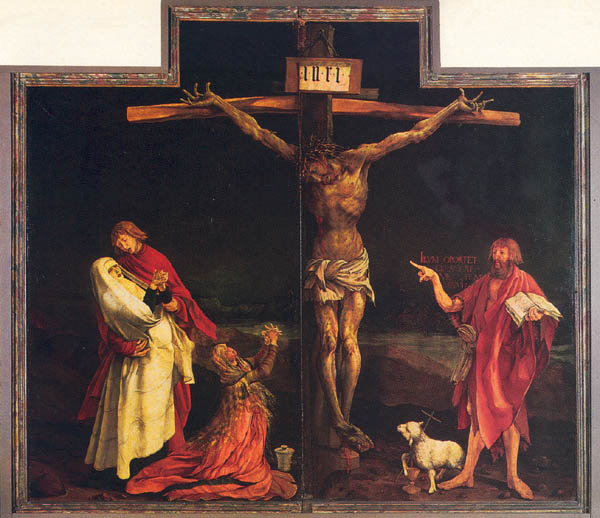Image Details

Giraudon/Art Resource, New York, NY
Startlingly realistic, Matthias Grunewald’s Crucifixion, painted on the central panels of the Isenheim Altarpiece between 1512 and 1515, depicts the event with excruciating detail. The weight of Jesus’ body pulls the ends of the rough-hewn crossbar downward and nearly wrenches his contorted arms out of their sockets, while blood oozes from the scourge marks, some of which are studded with thorns. To the right stands the Lamb of God, a symbol of the term that John the Baptist applied to Jesus (John 1:29, 35); and John the Baptist, whose words, “He must increase, but I must decrease” (John 3:30), appear above his pointing arm. To the left, John the Evangelist holds the fainting Virgin Mary, and a grief-stricken Mary Magdalene kneels at the foot of the cross. Beside Mary Magdalene stands a jar of ointment, a reference either to the earlier anointment episodes that are popularly, but mistakenly, identified with Mary Magdalene (Mark 14:3–9; Matthew 26:6–13; Luke 7:36–50; John 12:1–8), or to the anointing of Jesus’ corpse that she will attempt (Mark 16:1).
All four Gospels attest to Mary Magdalene’s presence at the crucifixion (Matthew 27:55–56; Mark 15:40; Luke 23:49; John 19:25), thereby suggesting her importance as a witness to this event.
